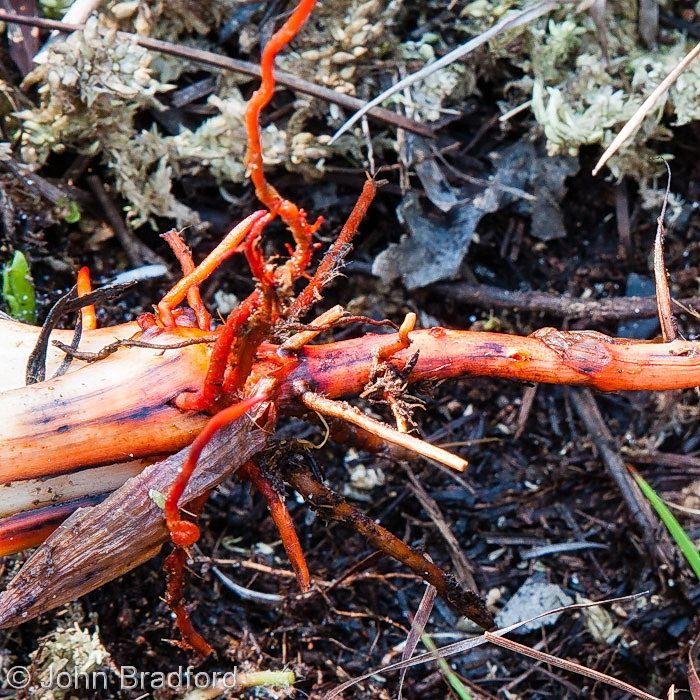FNPS Plant Database
Lachnanthes caroliana
Nomenclature
Common Name:
Synonym(s):
Genus species:
Family:
Haemodoraceae
Plant Specifics
Form:
Size:
Life Span:
Long-lived perennial
Flower Color:
Fruit Color:
Phenology:
Noted For:
Landscaping
Recommended Uses:
Considerations:
Availability:
Propagation:
Light:
Moisture Tolerance:
Always Flooded---------------------------------Extremely Dry
□□□□□□□□□■■■■■■■■■■■■□□□□□□□□□□□□□□□□□□□□□
Stays wet -to- Somewhat moist, no flooding
Salt Water Flooding Tolerance:
Unknown
Salt Spray/Salty Soil Tolerance:
Low/no tolerance of salty wind or direct salt spray
Soil or Other Substrate:
Sand, Lime Rock, Organic
Soil pH:
Suitable to Grow In:

USDA zones are based on the average annual extreme minimum winter temperature.
Don't know your zone? Click here to search by zip code.
Ecology
Wildlife:
Attracts bees, wasps, and butterflies. Documented bee species include Agapostemon splendens, Augochloropsis metallica, A. sumptuosa, Dialictus coreopsis, D. tamiamensis, Anthidiellum perplexum, Anthidium maculifroizs, Coelioxys dolichos, C. mexicana, C. octodentata, C. sayi, Megachile albitarsis, M. brevis pseudobreuis, M. georgica, M. inendica, M. petulans, M. texana, M. xylocopoides, Melissodes coinmunis, Apis mellifera, Bombus impatiens, B. pennsylvanicus, Xylocopa micans and X. virginica krom beini (Deyrup et al. 2002).
This is a favorite food plant of feral hogs which will dig up large patches overnight.
Native Habitats:
Natural Range in Florida:
Visit the USF Libraries Atlas of Florida Plants
Comments:
Ethnobotany:
General Comments:
Flowers have yellow tepals but the inflorescence has abundant white hairs which provide an overall white aspect in the landscape. The species is named for its red roots and rhizomes.
Feral hogs love this plant and will dig up extensive areas to get the roots. The plant in turn recovers quickly and new plants come up from the fragmented rhisomes.
Citations:
Deyrup, Mark; Jayanthi Edirisinghe, and Beth Norden. 2002. The diversity and floral hosts of bees at the Archbold Biological Station, Florida (Hymenoptera: Apoidea). Insecta Mundi. 544. https://digitalcommons.unl.edu/insectamundi/544
https://treasurecoastnatives.wordpress.com/2019/09/05/redroot-roulette/
Nelson, Gil. 2003. Florida's Best Landscape Plants. Association of Florida Native Nurseries.
Osorio, Rufino. 2001. A gardener's guide to Florida's native Plants. University Press of Florida, Gainesville, FL.
Tras, Pamela. 2001. Gardening for Florida's butterflies. Great Outdoors Publishing, St. Petersburg, FL.
Wunderlin, R. P., B. F. Hansen, A. R. Franck, and F. B. Essig. 2021. Atlas of Florida Plants ( https://florida.plantatlas.usf.edu/ ). Institute for Systematic Botany, University of South Florida, Tampa.










